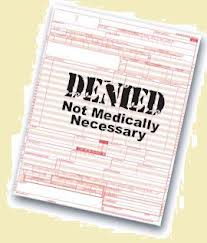Avoid Denied Claims By…Avoiding Deniable Claims?
It might seem painfully obvious, but when it comes to denial management, the best way to avoid denied claims is to make sure that your claims are correct and, therefore, won’t be denied.
Thinking that’s easier said than done? Well, if you have the right information — and the right tools — it doesn’t have to be.
Avoid Denied Claims By…Avoiding Deniable Claims?
It might seem painfully obvious, but when it comes to denial management, the best way to avoid denied claims is to make sure that your claims are correct and, therefore, won’t be denied.
Thinking that’s easier said than done? Well, if you have the right information — and the right tools — it doesn’t have to be.
Denial Stats
The AMA reports that up to 5% of claims are denied, and that number is only expected to rise (perhaps by as much as 200%) with the initial implementation of ICD-10 later this year. Medical billing and coding, which is undergoing enormous changes with the implementation of ICD-10, is always an area where additional training for staff can be a positive investment in denial management. Providing continuing education for coders can help them be better prepared to identify potentially problematic documentation, and be able to code with the highest level of accuracy.
Prevention is Key
Like most things in healthcare, prevention is key. The work put in to “treat” the denial problem, dedicating time and staff to resubmitting claims, is more costly and exhaustive than the upfront work and investment of ensuring that claims are correct the first time.
Diagnosing Denials
When it comes to diagnosing the reason behind your denied claims, however, technology is your best tool. Finding the common thread amongst your denied claims is the first step to correcting the problem. You may find that it is something relatively simple, but easily overlooked. If the problem is larger, more systemic, it’s likely that an overhaul of the department would be beneficial in ways than just eliminating claim denials.
Treat Quickly
In addition to understanding why a claim has been denied, taking action to turn that denial around is of the utmost importance. Don’t wait for those denials to stack up and then try to attack them all at once: as soon as you are notified of the denied claim take action to correct it. A popular approach for 2015 will be creating streamlined claims processing directly with payers, which will improve communication and overall response time. It will also make it easier to address claim concerns in a timely manner, meaning less time has to be spent strategizing.
Review Your Process Regularly
Reviewing your revenue cycle and coding/billing practices should be a routine occurrence. The best way to catch a potential area of weakness is to constantly be looking for ways to make your process more accurate and efficient. It’s not just the job of the administrators and leaders, however, staff should be trained to be evaluating practices in real-time, and should feel confident to bring up concerns, suggestions and innovations. Remember: those on the front lines who are coding and billing the claims are your best ally in determining why those claims are getting denied. Their insights are invaluable.
Common Denial Reasons
- The patient isn’t covered
- A required referral or pre-authorization is missing
- Medical necessity
- Incorrect coding
The Health Care Advisory Board posits that 90% of these denials are preventable, and over half are recoverable.
What To Do When Claims Are Denied
If you are faced with a denial, taking action quickly can help assure that you can recover the amount.
- Make your case for why the denial should be overturned
- Provide documentation to support it
- Keep track of your data and check it frequently
- Know which doctors/locations have the highest number of write-offs
- Review coding and billing practices frequently
